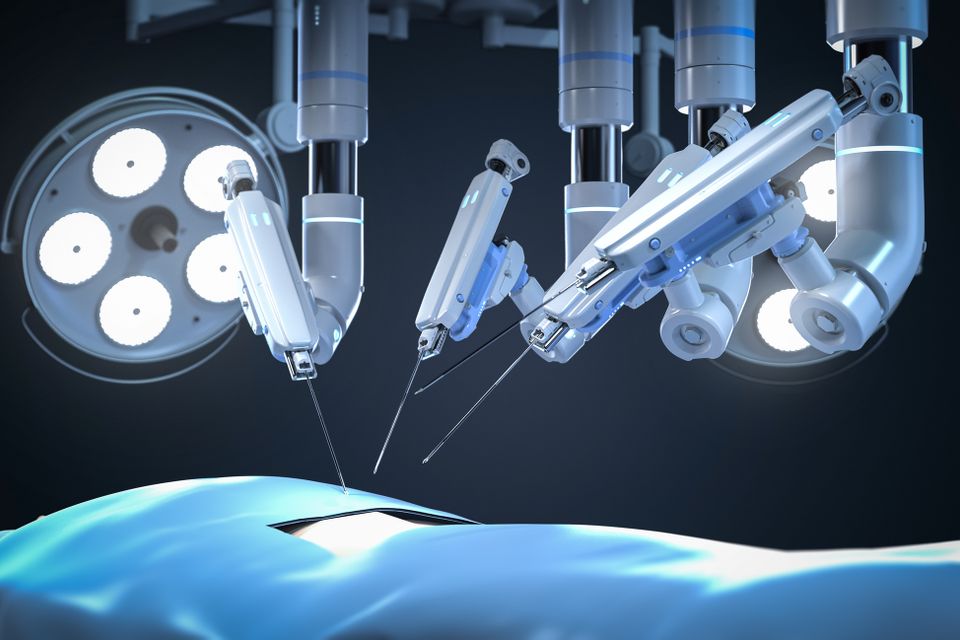Dr. Oberlander is at the forefront of today’s most advanced surgical techniques. One of the most innovative options he offers is robotic spine surgery—a cutting-edge, minimally invasive approach designed to treat back pain with greater precision, safety, and faster recovery.
For patients who haven’t found relief through conservative treatments, robotic-assisted surgery for the spine can be a game-changing solution.What is Robotic Spine Surgery?Robotic spine surgery is a type of minimally invasive spine surgery that uses robotic technology to assist surgeons during spinal procedures. This technique allows Dr. Oberlander to plan and perform surgery with extreme accuracy, using detailed imaging and navigation systems to guide the placement of surgical tools and implants.
Unlike traditional open surgery, this approach results in smaller incisions, less trauma to surrounding tissue, and a shorter recovery time—making it one of the most promising advanced spine surgery techniques available today. The History Behind Robotic and Laser Spine Surgery
Robotic and laser technologies have evolved over decades to revolutionize spine care. Laser spine surgery first gained traction in the 1980s as a minimally invasive method to treat disc-related conditions, using focused light energy to remove soft tissue with minimal disruption. Over time, advancements in imaging and endoscopic tools made laser procedures more precise and effective.
Meanwhile, robotic-assisted spine surgery emerged in the early 2000s with the FDA approval of systems like the Mazor SpineAssist. These technologies enabled surgeons to perform delicate procedures with unmatched accuracy by integrating preoperative 3D imaging and real-time navigation.
Today, surgeons are able to combine both procedures to offer a powerful solution for treating complex spinal conditions with greater safety and efficiency. While the robot enhances surgical planning and tool guidance, the laser enables targeted soft tissue treatment with minimal trauma. This combination represents the next generation of minimally invasive spine surgery.
Dr. Oberlander remains at the forefront of this progress, using these technologies not as isolated tools, but as integrated solutions to deliver personalized, high-precision care for his patients.
How It Works
During spine surgery with robotics, Dr. Oberlander uses a robotic guidance system integrated with 3D imaging to map the exact surgical path before making any incisions. The robot doesn’t perform the surgery on its own—instead, it enhances the surgeon’s ability to perform complex procedures with maximum accuracy.
This level of precision is especially important in surgeries involving spinal nerves, discs, or alignment corrections, and is ideal for treating conditions like:
- Herniated discs
- Spinal stenosis
- Degenerative disc disease
- Scoliosis or spinal deformities
- Persistent back pain requiring surgical intervention
Benefits of Robotic Spine Surgery
There are several major robotic spine surgery benefits that make this technology a preferred option for both surgeons and patients:
- Smaller incisions and less scarring
- Reduced blood loss and lower risk of infection
- Greater precision in hardware placement
- Shorter hospital stays
- Faster recovery and return to daily activities
- Less post-operative pain
This makes robotic surgery for back pain an excellent option for patients seeking long-term relief with minimal downtime.
Who is a Candidate?
Not all patients require surgery—but when surgery becomes necessary, robotic technology can provide the safest and most effective option. Dr. Oberlander may recommend robotic spine surgery for a herniated disc, spinal instability, or nerve compression when other treatments haven’t worked.
Thanks to his specialized training and experience, he can identify which patients are best suited for this approach and create a customized surgical plan that delivers the best possible outcome.
Robotic Spinal Surgery Recovery
One of the key advantages of robotic spinal surgery is the quicker and more comfortable recovery it offers. Most patients are able to walk the same day or the day after surgery. Hospital stays are shorter, and many return to light activity within a few weeks, depending on the procedure.
Dr. Oberlander works closely with each patient during recovery, offering personalized care plans that may include:
- Physical therapy
- Pain management strategies
- Movement and posture guidance
- Long-term spine health support
A Leader in Advanced Spine Surgery TechnologyWith extensive experience in both complex and minimally invasive spine surgery, Dr. Oberlander combines deep expertise with the latest in spine surgery technology. His commitment to innovation ensures patients receive state-of-the-art care, whether they’re dealing with chronic pain or an acute spinal condition.
As the team neurosurgeon for LSU Athletics from 2012 to 2022 and one of the top spine surgeons in Louisiana, he is a trusted leader in the field of robotic-assisted spine surgery.
If you're exploring surgical options for back pain, schedule a consultation with Dr. Oberlander to get back to living pain-free.


